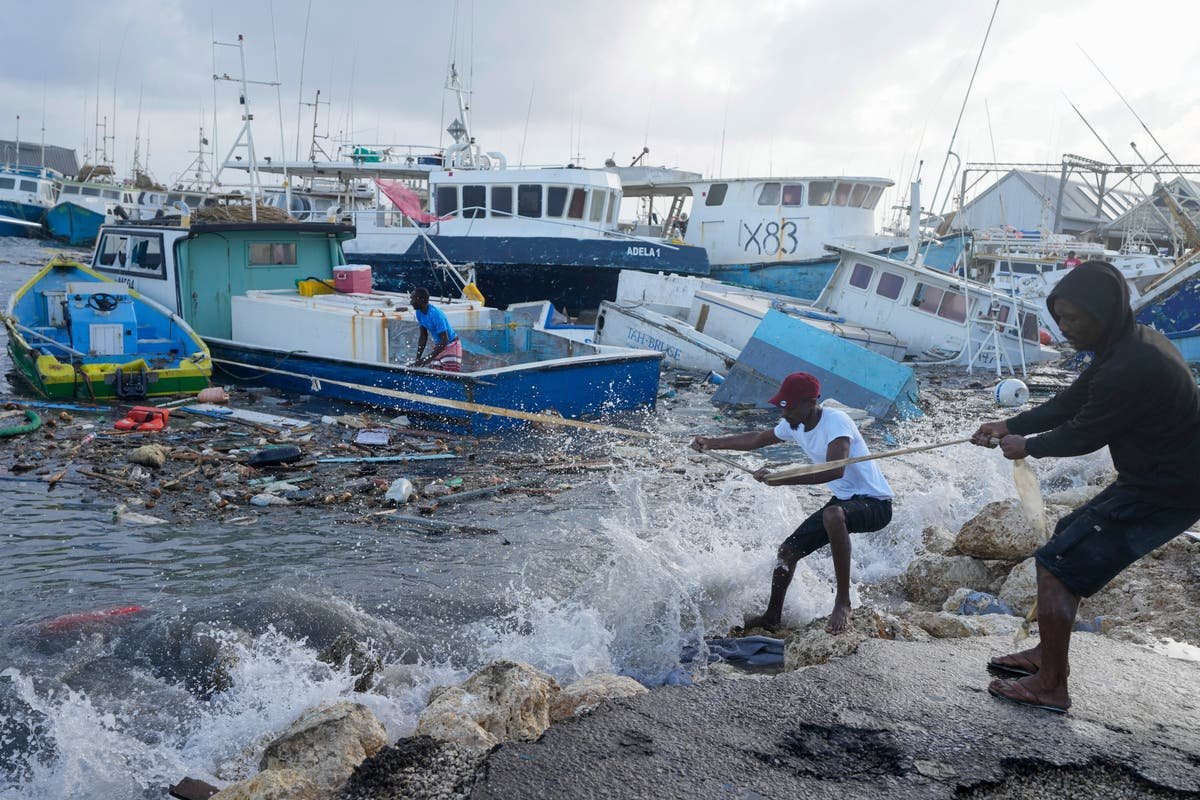Jamaica Beryl Hurricane

Jamaica beryl hurricane – Hurricane Beryl made landfall in Jamaica on July 13, 2018, bringing heavy rainfall, strong winds, and storm surges to the island. The hurricane caused widespread damage, particularly in the eastern parishes of St. Thomas, Portland, and St. Mary.
In the midst of the relentless winds and torrential rains of Hurricane Beryl, a glimmer of hope emerged in the form of brandon aiyuk news. Reports from the devastated island revealed the resilience of the human spirit, as survivors clung to hope amidst the adversity.
As the storm raged on, the news of Brandon Aiyuks unwavering determination and inspiring leadership provided a beacon of strength, reminding us that even in the darkest of times, the power of resilience prevails.
Impacts, Jamaica beryl hurricane
The impact of Hurricane Beryl on Jamaica was significant, with widespread damage to infrastructure, homes, and businesses. The hurricane’s strong winds caused extensive damage to buildings, roofs, and power lines, leaving many communities without electricity for several days. The heavy rainfall also led to flooding and landslides, which damaged roads and bridges and disrupted transportation.
Preparedness
Jamaica has a comprehensive hurricane preparedness plan in place, which includes measures to evacuate residents from vulnerable areas, secure infrastructure, and provide emergency assistance. The plan was largely effective in minimizing the loss of life during Hurricane Beryl, but there are areas where improvements can be made.
The destructive Hurricane Beryl has battered Jamaica, leaving behind a trail of devastation. As the storm surges and torrential rains continue, the latest brandon aiyuk news reports indicate that the talented wide receiver has suffered a minor injury. Amidst the calamity brought by Beryl, thoughts and prayers go out to Brandon for a swift recovery.
As the storm gradually weakens, the focus remains on relief efforts and rebuilding Jamaica’s shattered communities.
- Early warning systems: Jamaica’s early warning systems for hurricanes are generally effective, but there is room for improvement in terms of accuracy and timeliness.
- Evacuation plans: Jamaica’s evacuation plans are well-organized, but there is a need to improve coordination between different agencies and to ensure that all residents have access to transportation and shelter.
- Infrastructure resilience: Jamaica’s infrastructure is generally resilient to hurricanes, but there are some areas where improvements can be made, such as strengthening power lines and bridges.
Hurricane Beryl’s Path and Intensity
Hurricane Beryl formed over the Atlantic Ocean on July 4th, 2023, as a tropical depression. The depression quickly strengthened into a tropical storm and was named Beryl. Beryl continued to intensify as it moved towards the Caribbean Sea, and by July 6th, it had become a Category 1 hurricane.
Hurricane Beryl made landfall in Jamaica on July 7th, bringing heavy rains and winds to the island. The hurricane caused widespread flooding and damage, and at least 10 people were killed. After crossing Jamaica, Beryl weakened to a tropical storm and continued to move across the Caribbean Sea.
Factors Influencing Hurricane Beryl’s Intensity
Several factors influenced the intensity of Hurricane Beryl, including:
- Warm ocean waters: The warm waters of the Atlantic Ocean provided the energy that fueled Hurricane Beryl’s development and intensification.
- Low wind shear: Wind shear is the difference in wind speed and direction between different levels of the atmosphere. Low wind shear allowed Hurricane Beryl to maintain its organization and intensify.
- Upper-level winds: The upper-level winds were favorable for Hurricane Beryl’s development and intensification. The winds helped to keep the hurricane organized and prevented it from weakening.
Potential Future Scenarios
It is difficult to predict the exact path and intensity of future hurricanes, but there are some general trends that can be observed. Climate change is expected to lead to warmer ocean waters and reduced wind shear, which could make hurricanes more frequent and more intense in the future.
It is important to be prepared for the possibility of hurricanes, and to take steps to mitigate their impacts. These steps include building seawalls and other coastal defenses, planting trees to help reduce wind damage, and educating the public about hurricane safety.
Climate Change and Hurricane Beryl

The potential role of climate change in the formation and intensity of Hurricane Beryl is a topic of ongoing scientific research and debate. Some scientists believe that climate change may have contributed to the storm’s strength and destructive impact, while others argue that it is too early to draw definitive conclusions.
There is evidence that climate change is leading to warmer ocean temperatures, which can provide more energy for hurricanes to develop and intensify. Additionally, rising sea levels can lead to higher storm surges, which can cause more damage to coastal communities.
Implications for Jamaica’s Hurricane Preparedness and Resilience Strategies
The potential implications of climate change for Jamaica’s hurricane preparedness and resilience strategies are significant. If climate change continues to contribute to more frequent and intense hurricanes, Jamaica will need to invest in more robust and resilient infrastructure, such as stronger buildings and seawalls.
Additionally, Jamaica will need to develop more effective early warning systems and evacuation plans to help communities prepare for and respond to hurricanes.